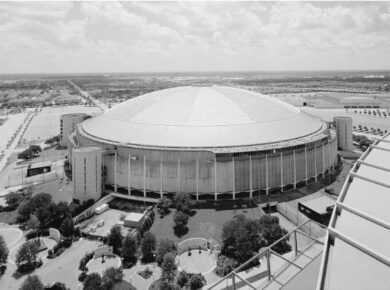Opening of the Tokyo Tower on 23 December 1958.

Photo: Fg2
The Tokyo Tower is a communications and observation tower in Japan, built in 1958. At 333 meters, it is the second-tallest structure in Japan. The structure is an Eiffel Tower-inspired lattice tower that is painted white and international orange to comply with air safety regulations.

Photo: Wikipedia
The tower’s main sources of income are tourism and antenna leasing. Over 150 million people have visited the tower. FootTown, a four-story building directly under the tower, houses museums, restaurants, and shops. The tower is repainted every five years, taking a year to complete the process.

Photo: Kakidai
Originally, it was planned for the tower to be taller than the Empire State Building, which at 381 meters was the highest structure in the world at the time. However, the plan fell through because of the lack of both funds and materials.
Looking to the Western world for inspiration, Naitō based his design on the Eiffel Tower. With the help of engineering company Nikken Sekkei Ltd., Naitō claimed his design could withstand earthquakes with twice the intensity of the 1923 Great Kantō earthquake or typhoons with wind speeds of up to 220 kilometers per hour.
source: pinterest
The tower was made of steel, a third of which was scrap metal taken from US tanks damaged in the Korean War. Despite being slightly taller than the Eiffel Tower, Tokyo Tower only weighs about 4,000 tons, 3,300 tons less than the Eiffel Tower.
About the Author:

Bruno Dursin – Managing Director at Believe in Steel. Bruno has more than 30 years of experience in promoting steel & steel solutions. His clients benefit from his extensive network within the building industry.






